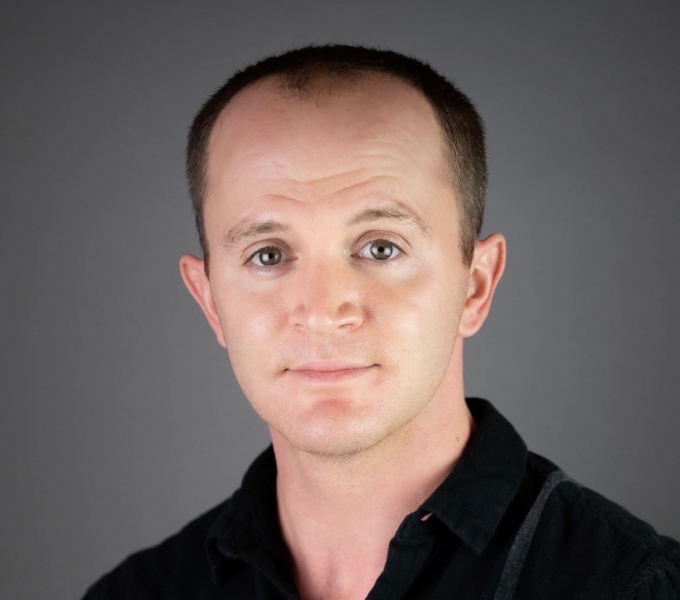
Dr. Christopher Staley, calls his decision to attend Skidmore College, his “best mistake ever.”
The mistake?
“Not following the majority of my eight brothers and sisters to The College of Holy Cross,” said Staley.
This rogue decision led him to what is now his passion, the Suzuki Method of Acting Training. A training technique that emphasizes the human body's expression of animal energy as the basis of theater, the Suzuki Method stresses the importance of the actor's body over the text of a work.
While at Skidmore College, Chris had the opportunity to study Suzuki from the SITI Company (Saratoga International Theater Institute) during their summer residency. After receiving his master's degree from The American Repertory Theatre/Moscow Art Theatre Institute for Advanced Theatre Training at Harvard University, he visited Skidmore for the 25th anniversary of the founding of the SITI Company and saw a Suzuki performance of Trojan Women that brought him to tears. It cemented his decision to travel to Toga, Japan, and study with the Suzuki Company of Toga (SCOT).
“I always knew I wanted to teach,'' Staley said and gave praise and credit to his professor and mentor from Skidmore, Alma Becker. He enrolled in a PHD program at the University of Pittsburgh, focusing on the Suzuki Method, and returned to Toga three times to train with Mr. Suzuki.
But it was during the pandemic when he honed his skills. Taking advantage of the time and technology available, he collaborated with other Suzuki trainers and cemented his desire to share this life-changing method.
When Texas Tech advertised for a movement specialist on faculty, someone to bring non-western methods to the department, Staley highlighted his extensive Suzuki training and promoted it as an opportunity to share not only an eastern acting method but also a global one.
“The Suzuki Method has been around for 50 years and is taught on every continent except Antarctica,” Staley explained.
This training technique isn't the only thing him brought to Texas Tech. He is also well versed in yoga, which he teaches at the university rec center, and Viewpoints, a movement-based practice that explores the spatial relationships of the actor's body. By alternating these three differing techniques in the classroom, Staley provides his students with a solid foundation in movement training and more tools in their “acting toolbox.”
“In the classroom, I want the students to focus more on the process rather than the product,” explains Staley. “This process encourages self-exploration, curiosity, and humility. It encourages a hunger for more training.”
The greatest gift from Suzuki he wants to share with his students is helping them understand how they relate to themselves. He assures them that, while they will always be in a state of growth, they will never be perfect.
“And that is not only ok,” said Staley, “but what I am looking for. There is no external competition. Only competition with oneself for improvement.”
Whether his students continue studying his chosen methods is less important to him than their continuing to study and grow as artists.
